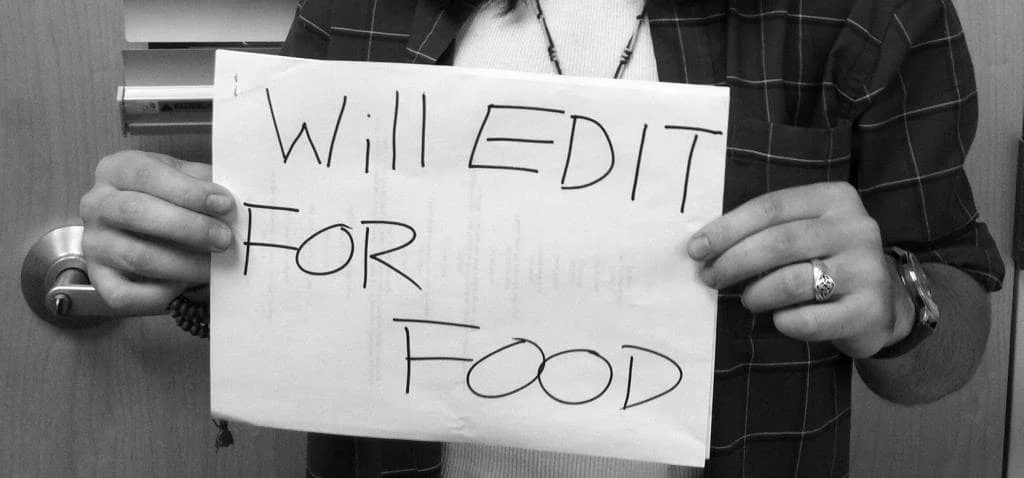Use contract clauses you should freelance with – being freelancer means whole business is literally on your shoulders. How to make sure you secure your business?
Quick question: Did you have a freelance contract when you first began freelancing? Well, you should. Working without a contract is an invitation to be taken advantage of. A contract doesn’t just save you from being fleeced, it also helps streamline your work around a schedule as well as all those clarified details of what was agreed between you (the provider) and the client from the beginning. More importantly, it prevents you from double work and headaches down the line.
We know the importance of contracts but we’re just so intimidated by them! Unless you’re a legal writer, it’s natural to fear drawing up the document we know as the contract. But here’s the thing: Using simple language is the best way to avoid confusion. You don’t need a lawyer to draft a contract. You just need to know what works for you. So grab a paper and pencil (or open up a Word document) and begin drafting your first contract. Don’t miss out on any of these clauses because you really, really shouldn’t freelance without them.
1. Pricing/Rates
The most important thing to ensure sustainability in your services is to make your rates clear. Put them down in writing during the intiial stages of the project. Do you charge by hour, or by complete project? Make sure your client is agreeable to the way you charge them, so they wouldn’t dispute and withhold payment thereafter.
If you’re charging by the hour, include a minimum and maximum work-hour clause. “Project Red won’t take less than X hours and no more than Y.” The X is for your security – you’ll get paid for these hours even if you finish early. The Y is for your client’s security. He won’t have to pay for more than Y no matter how long it takes for you to finish the job.
2. Payment/Invoicing
Spell out a payment schedule. Do you work with a half now, half after payment schedule, or with 3 installments of 40-40-20? Some freelancers prefer 50-25-25. Everyone has a reason for their preferences. Personally, I prefer to be paid in 3 installments on bigger projects. Usually 40% upfront, 40% when I send the first draft and the final 20% when I send over the finished copy.
How you get paid also needs to be included in the contract. Do you accept payment via direct deposits, checks or PayPal? How long a grace period do you give when receiving payment? Some organizations issue payments a period of time after they receive the invoice. Make sure you have ironed out all these kinks before you start work.
3. Single Point of Contact
Oh boy! This clause is a lifesaver. If you’ve ever worked with a client where you had two or more people giving you feedback and requesting changes, you will know that this is necessary. By including the ‘single point of contact’ clause, you’re limiting your communication to one person. All the feedback and revision requests need to go through that one person – whether your client is a soloprenuer or a manager in a big firm.
The larger the team that deals with you, the more internal conflicts they have to iron out. Having a single point of contact saves you from confusion and double work. You don’t have to waste time and energy trying to satisfy three points of contact (a.k.a. people with authority to make changes) with different ideas of what they need.
4. Kill Fee
Sometimes, for reasons beyond our control, a project gets canceled after you’ve started working on it. For freelancers without a contract, it might mean that they won’t get paid for the work they have already done until the notice of cancellation. A kill fee clause saves you from being the disadvantaged party in case a project gets axed. It makes sure you’re paid for how much of the work already done since you have spent your time and effort on it, both of which could be spent on other projects that you may have on the side.
Different freelancers charge different kill fee. Some have an elaborate stage by stage kill fee schedule. Others charge a flat 50% and some charge as low as 25%. It depends on what seems fair to you – the point is to deliver some form of compensation on the work that has been done but won’t be put to use.
5. Revisions and rewrites
We’ve all had a client or project where we just can’t seem to get what they want right due to various reasons. It could be that the client is confused or fickle-minded, or a perfectionist – one who can never be satisfied no matter how many revisions you do. The worst kind is the one who changes the entire focus or direction of the project, halfway through the timeline. All prior work poured into the project could become useless, and you will be starting from scratch but without a revised deadline.
Instead of spending much of your time revising, rewriting, redesigning, recoding etc for hours, a clause in your contract can make this a painless procedure. Offer a number or free revisions/rewrites and then charge for any more the client wants done. This would at least reduce the client’s inclination to make changes as he likes, and start doing revisions that are only necessary. Most freelancers offer 2 free revisions, 3 at most depending on the nature of the work they offer.
6. ‘Scope Creep’
A ‘Scope Creep’ is exactly what you think it sounds like. It refers to that nasty little bugger who seems innocent at first but grows into a monster fast. Imagine a client who pays on time and appreciates your work. It’s the perfect client, right? Eventually the Scope Creep will start saying things like, “Hey, we were going through the work and realized that this will be even more awesome if xyz was added to it. Can you include that too?” You say, “Sure, it won’t take long, I’ll just quickly add that in.” And that’s how it begins.
During the course of the project, this will keep repeating, and over time it will accumulate to a point where you’re doing more work than you signed up for and you’re not getting paid for it! A scope creep clause is your protection against it. Reserve your right to adjust the rates of the project should the scope of the job, or amount of work you have to do is increased significantly. This way the client knows that they are liable to pay extra for any additional requirements they want to throw in.
7. Copyrights
Depending on the kind of freelancing you do, there are different copyright options available. Freelance writers have the most copyright options such as first serial rights, print rights, electronic rights etc. For most freelancers though it boils down to owning the rights until the final payment is made.
Copyrighting your work is a must if you want to avoid having a client run away without paying for your work or use it without permission. On the other hand, It’s also a form of protection for your client. If they have made full payment, they have already bought the copyrights from you, hence they know, and should expect to not find the work done anywhere elsewhere.
8. Deadline
No freelancer signs on a project without a deadline. A deadline is necessary. A lot of times, freelancers can set their own deadlines; other times the work is time sensitive so the client sets their own deadline. Either way, getting it down in writing is a security measure for both you and your client. For the client this prevents the freelancer from delaying the completion of the project. For the freelancer it allows for a change in the deadline in case the client does not get back with the required feedback/information/approval in time.
Having deadline will also allow you to schedule your future work even before you start working on them yet. This ensures that you don’t take in two projects that need to run simultaneously and yet stil be able to keep your working schedule filled, giving your income a bit more stability.
Conclusion
Now that you know which clauses to include, it shouldn’t take you long to draft out a simple contract. Contrary to what you might think, this contract doesn’t have to look like a legal document. In fact, you can collect all the emails you’ve exchanged with the client, transfer the results of your discussions into the document, hammer out all the details, and compile them. Both of you should acknowledge that you have both read and agreed to the contents of the contract, sign it and each keep a copy for future reference.






